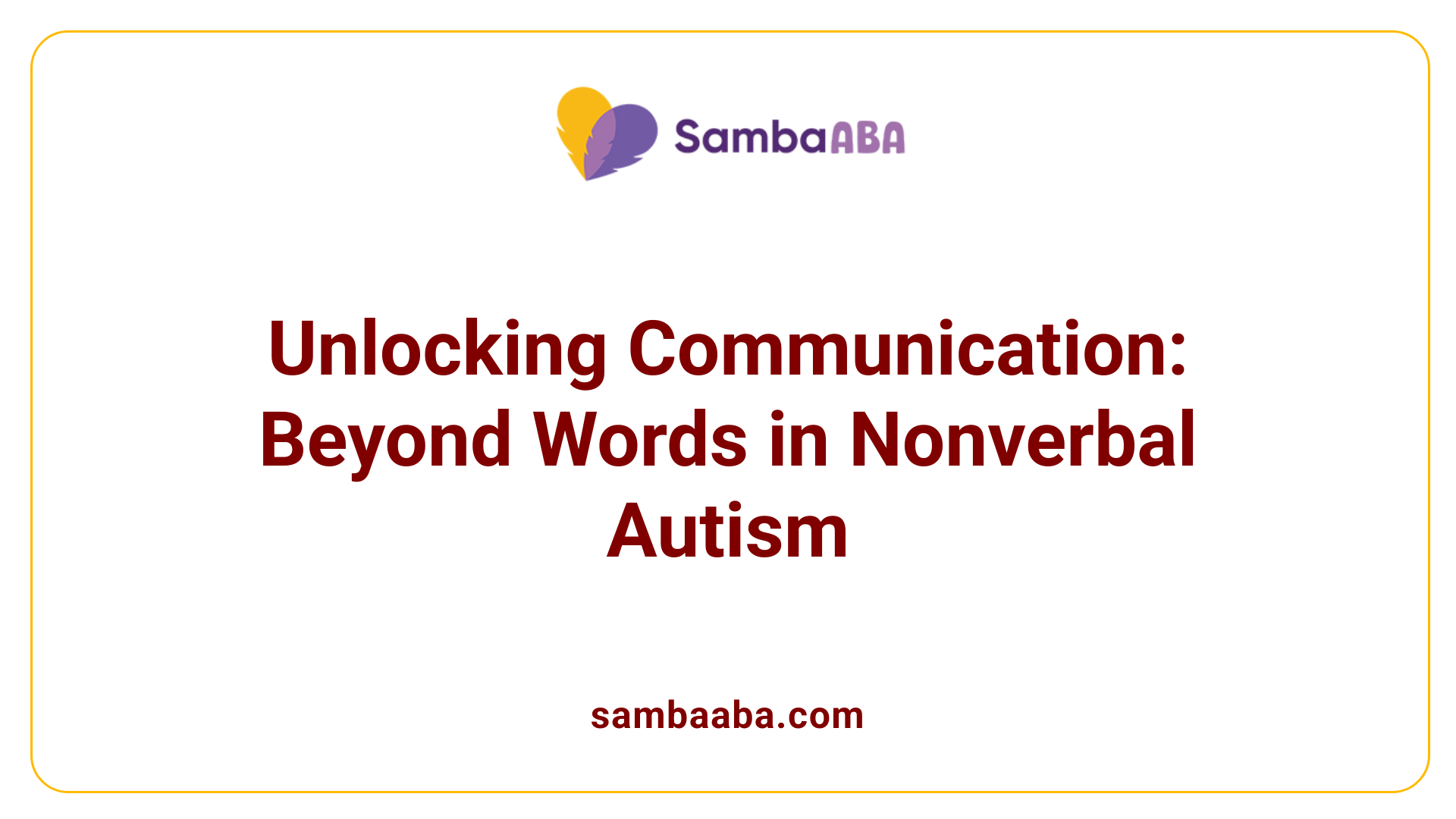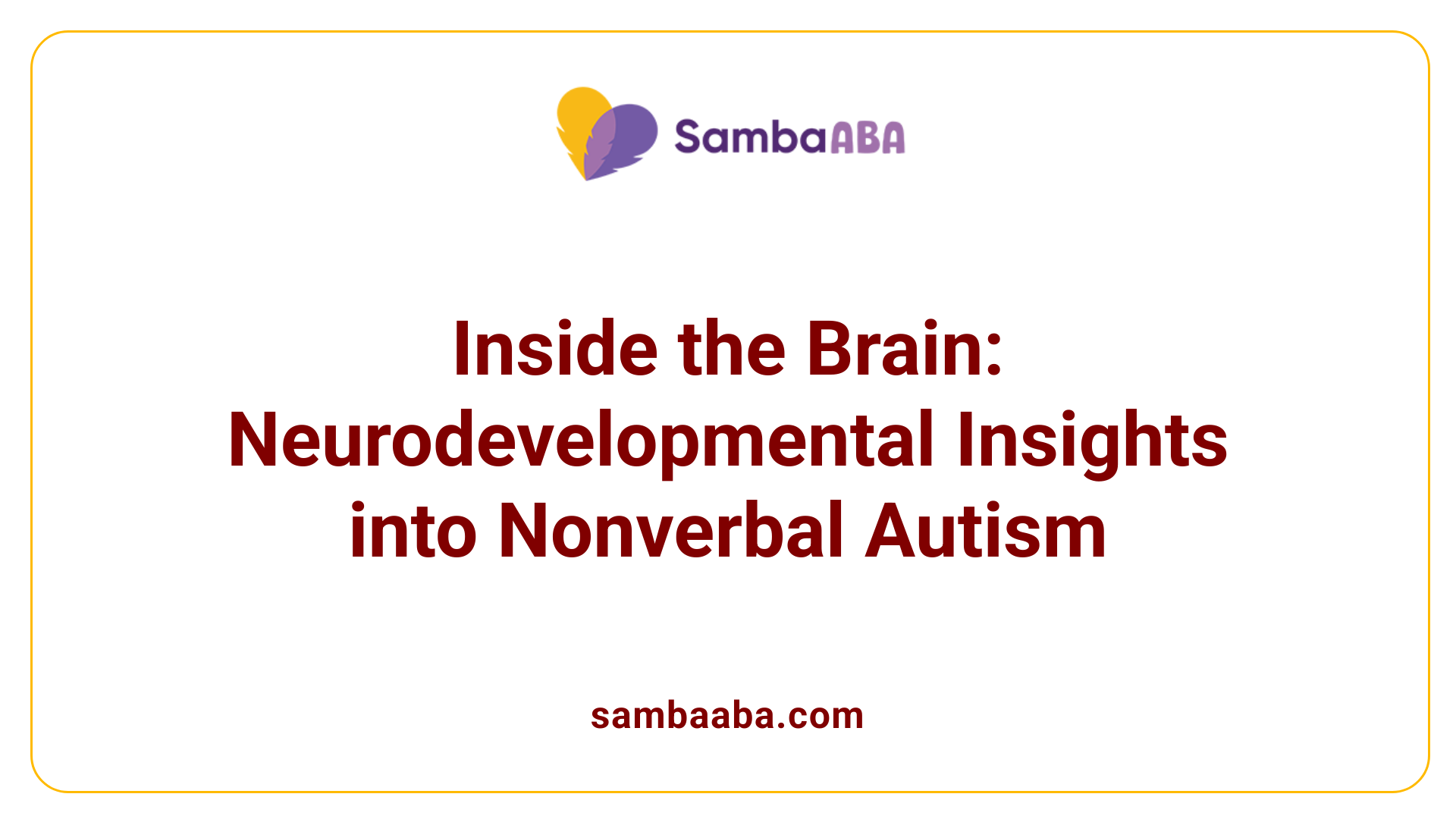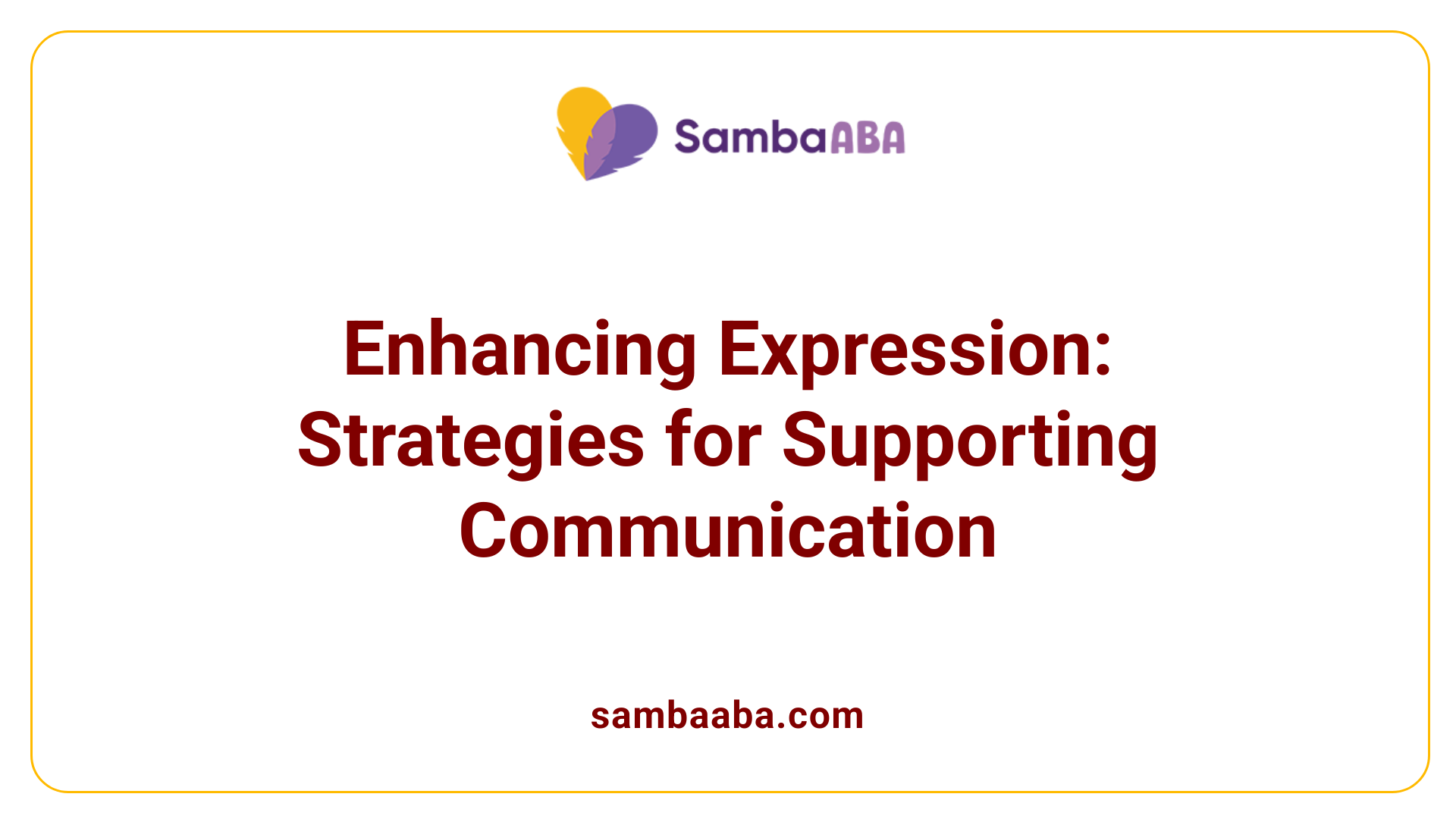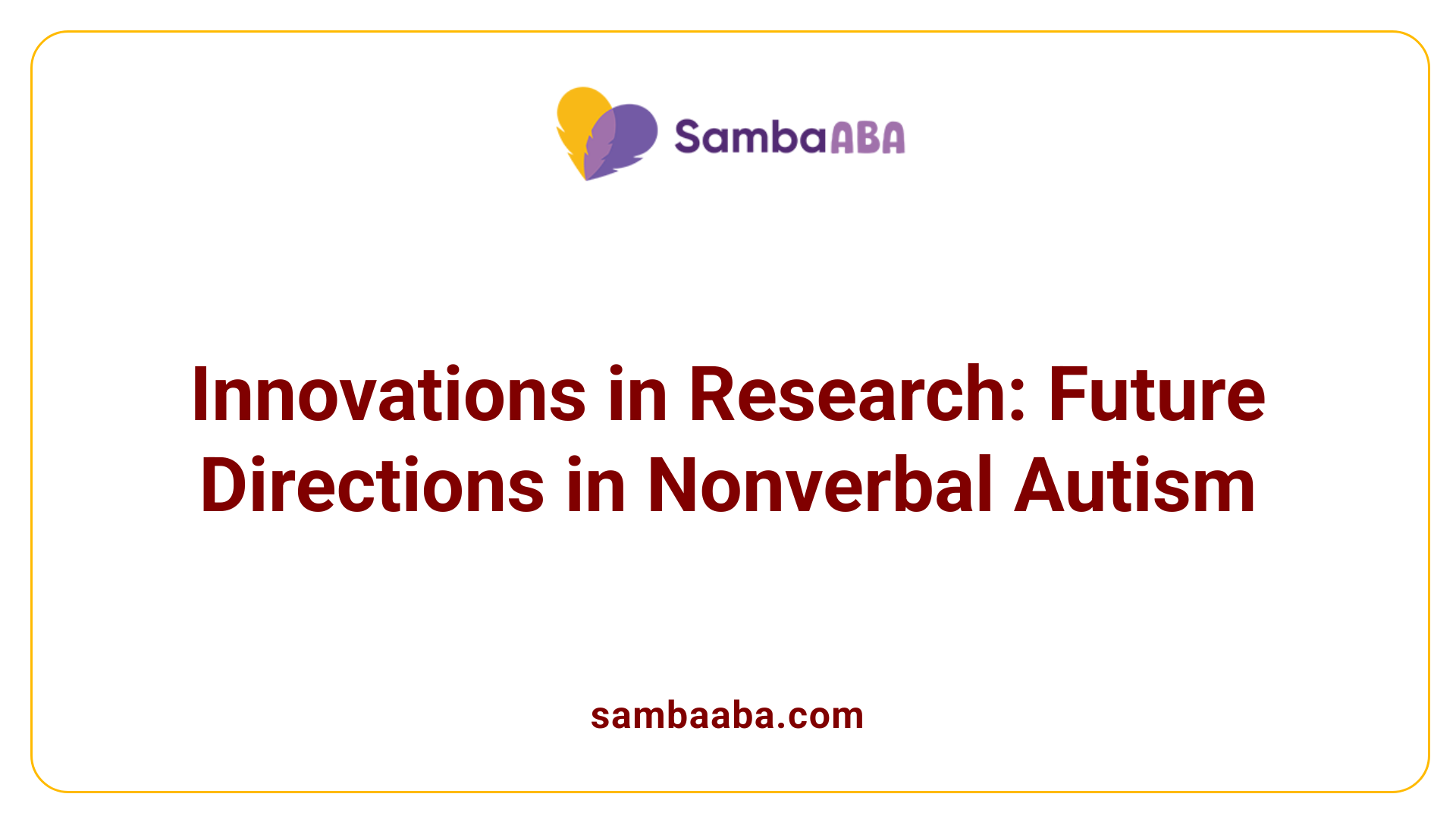Nonverbal Autism
Understanding a Hidden Spectrum within Autism
Unveiling Nonverbal Autism: Challenges, Characteristics, and Hope
Nonverbal autism, a significant facet of the autism spectrum disorder (ASD), affects an estimated 25 to 30 percent of autistic individuals. Despite limited or absent spoken language, many of these individuals possess remarkable understanding and can communicate effectively through various alternative methods. This article explores the signs, challenges, underlying factors, assessment tools, therapies, societal perceptions, and personal stories surrounding nonverbal autism, highlighting ongoing research and the importance of support for individuals and their families.
What is Nonverbal Autism? Symbols of Communication Beyond Words

What is nonverbal autism, and what are its signs and characteristics?
Nonverbal autism describes a subgroup of individuals on the autism spectrum who face significant challenges in developing spoken language. These individuals often do not speak more than a few words or may not speak at all. It is not an official diagnosis itself but a way to categorize those with autism who are minimally verbal or completely nonverbal, constituting about 25-30% of all autistic people.
Signs of nonverbal autism typically appear early and include delayed speech milestones, such as not babbling or responding to their name by age one. Other characteristics include limited gestures like pointing, avoiding eye contact, and showing repetitive behaviors like hand-flapping or rocking. Many also have difficulty with social engagement and exhibit sensitivities to sensory input.
Even without speech, many nonverbal individuals understand spoken language and can communicate effectively through alternative means. They might use writing, typing, gestures, or communication devices such as speech-generating devices to share their thoughts and needs.
Support strategies, including early behavioral interventions such as Applied Behavioral Analysis (ABA), speech therapy, and assistive communication technologies, can help improve their communication skills. These methods have proven to enhance quality of life and foster greater independence.
Understanding that nonverbal autism is a manifestation of autism’s wide spectrum helps shift perspectives. Many nonverbal individuals can develop functional communication skills with proper support, demonstrating that the absence of speech does not equate to a lack of understanding or intelligence.
Underlying Neurodevelopmental and Biological Factors

What are the causes and underlying factors of nonverbal autism?
The origins of nonverbal autism are multifaceted, involving a mix of genetic, neurobiological, and environmental influences. Research indicates that genetic factors play a significant role. Certain inherited gene variations and mutations—such as those seen in conditions like Fragile X syndrome or tuberous sclerosis—can heighten the risk of developing autism, including nonverbal presentations.
In addition to genetics, prenatal and perinatal environmental factors contribute to brain development differences. These factors include maternal age over 35, exposure to toxins during pregnancy, complications during birth, or premature birth. Such influences can disrupt normal neurodevelopment during critical early stages.
Neurobiologically, abnormalities in brain structures have been observed in individuals with nonverbal autism. The amygdala, a region critical for processing emotions and social behavior, often shows differences in size and activity levels. Studies have found increased neuronal density and hyperactivity in the amygdala, which may impair social and communication skills.
Functional imaging studies suggest that atypical brain responses to sound and social cues are common, affecting the development of speech and nonverbal communication. For instance, delayed auditory responses have been observed, especially among children with very limited speech.
Overall, the convergence of genetic predispositions and abnormal neurodevelopmental processes in key brain regions underpins the manifestations of nonverbal autism. These complex interactions influence the pathways involved in social understanding, emotion recognition, and language learning, which explains the challenges faced by nonverbal individuals on the spectrum.
Detecting and Diagnosing Nonverbal Autism
How is nonverbal autism assessed and diagnosed in children?
Diagnosing nonverbal autism involves a detailed process that combines developmental evaluations, clinical observations, and standardized testing. Clinicians typically gather extensive information from parents and caregivers, focusing on the child's social and communication behaviors.
Behavioral observations form a core part of the diagnosis. Professionals look for signs such as persistent deficits in social-emotional reciprocity, challenges with nonverbal communication like gestures or facial expressions, and unusual repetitive behaviors. They examine how the child interacts socially, responds to social cues, and uses gestures or sounds.
To provide a structured framework, clinicians utilize standardized assessment tools. The Autism Diagnostic Observation Schedule (ADOS) is frequently used; it involves play-based activities and social interactions to observe communication skills, social responses, and behaviors. The Autism Diagnostic Interview-Revised (ADI-R) is a comprehensive parent interview that helps clarify developmental history and current behaviors.
For children with minimal verbal skills, specific measures such as the MacArthur-Bates Communication Development Inventories and the Vineland Adaptive Behavior Scales are employed. These assessments evaluate language skills, social communication, and adaptive functioning.
The diagnostic criteria are based on the DSM-5, emphasizing early symptoms that cause significant impairment and are not attributable to other developmental disorders. The process also includes ruling out other conditions, such as hearing impairments or intellectual disabilities, which might influence communication.
Ongoing assessments are crucial, especially for young children, to monitor development and adapt intervention strategies accordingly. Accurate diagnosis ensures that nonverbal children receive tailored support to foster communication and social skills.
Overall, a multidimensional evaluation combining observation, caregiver input, and standardized measures provides the most accurate diagnosis of nonverbal autism, guiding effective intervention efforts.
Supporting Communication Development: Therapy and Intervention Strategies

What intervention strategies and therapies support communication development in nonverbal individuals?
Supporting nonverbal individuals on the autism spectrum involves various targeted strategies and therapies aimed at enhancing their communication abilities. Speech and language therapy is central, focusing on improving both receptive (understanding) and expressive (speaking or signing) skills. Therapists may employ augmentative and alternative communication (AAC) tools such as picture exchange systems, communication boards, or speech-generating devices to facilitate expression.
Behavioral interventions, particularly applied behavior analysis (ABA), are backed by research and utilize structured teaching methods. Techniques like discrete trial training (DTT) and pivotal response treatment (PRT) help reinforce communication opportunities through rewards, repetition, and clear prompts.
Developmental and social-relational therapies focus on improving social skills and emotional connections that underpin effective communication. The DIR/Floor Time™ approach encourages development through play, fostering engagement, and understanding social cues. Social stories and role-playing activities are also effective tools for teaching social behaviors and appropriate responses.
Naturalistic approaches integrate learning into everyday routines and preferred activities, allowing spontaneous communication through gestures, eye contact, and vocalizations. These methods emphasize making communication a natural part of daily life, which helps in generalizing skills across settings.
Assistive technology and visual supports play a significant role in making communication accessible. Devices capable of synthesizing speech or displaying images promote independence and help individuals convey their needs and thoughts effectively.
Combining these strategies and tailoring interventions to each individual’s strengths and needs result in better outcomes and improved quality of life for nonverbal persons on the spectrum.
The Role of AAC Devices and Methods in Enhancing Communication
How are augmentative and alternative communication (AAC) devices used to assist nonverbal individuals?
AAC devices play a crucial role in helping nonverbal individuals, including many with autism, to communicate effectively. These tools come in various forms, tailored to meet individual needs and abilities.
Among the most common AAC systems are picture exchange systems like PECS, speech-generating devices (SGDs), and communication boards. These assistive tools enable users to select images, symbols, or words to express their wants and needs, which are then vocalized by the device or interpreted by caregivers.
AAC methods can be both aided and unaided. Aided systems include electronic devices, apps, and paper-based tools, while unaided systems involve gestures, sign language, or facial expressions. The choice depends on the user's motor skills, cognitive level, and preferences.
Research demonstrates that AAC support not only helps with immediate communication but also promotes language development. For example, systems like PECS have been shown to increase verbal approximations and improve social engagement.
When integrated into comprehensive therapy programs, AAC devices foster independence by enabling individuals to initiate conversations, make choices, and participate socially. They often reduce frustration and anxiety caused by communication barriers.
Overall, AAC devices are vital assistive technologies. They empower nonverbal individuals to engage more fully in social, educational, and everyday situations, enhancing their quality of life and social integration.
Myth Busting: Common Misconceptions about Nonverbal Autism

Are there common myths or misconceptions about nonverbal autism?
Yes, there are many misunderstandings surrounding nonverbal autism. A prevalent myth is that individuals who do not speak cannot learn to communicate. In reality, many nonverbal autistic individuals develop ways to express themselves through gestures, writing, sign language, or assistive devices like speech-generating technology.
Another false belief is that difficulty talking means the person has an intellectual disability. However, nonverbal autistic individuals often understand spoken language and may have average or above-average intelligence.
Some people erroneously think that nonverbal autism results from poor parenting or is caused by vaccines. Scientific research has thoroughly debunked these myths, showing no evidence linking parenting style or vaccinations to autism.
The truth is, nonverbal autism is diverse, and with the right supports—such as early intervention, communication aids, and tailored therapies—many individuals make significant progress. Recognizing their potential and unique strengths is crucial to supporting their development and improving their quality of life.
Resources and Support for Families and Individuals
Families of nonverbal autistic children have a broad array of resources to help support their child's development and well-being. Access to specialized therapy options, such as speech therapy, applied behavior analysis (ABA), and occupational therapy, is crucial for fostering communication skills and social interactions.
Educational and community resources play a vital role in creating inclusive environments. Many organizations offer programs tailored for nonverbal individuals, including adaptive learning tools, visual supports, and social skills groups. These resources often collaborate with schools and community centers to promote understanding and acceptance.
Advocacy and legal rights are fundamental for ensuring that children receive appropriate educational accommodations and services. Organizations like the Autism Society provide families with guides, toolkits, and training to advocate effectively for their child's needs. They also facilitate access to legal frameworks that protect educational rights, such as Individualized Education Programs (IEPs) and disability rights laws.
For families seeking targeted support, Autism Speaks offers a dedicated Autism Response Team that delivers personalized assistance, guiding families to local specialists, support groups, and resources. Their comprehensive Resource Guide helps locate providers specializing in nonverbal autism and related therapies.
Support groups and parent networks foster a sense of community, allowing families to share experiences, strategies, and emotional support. Online forums and local meetups are common avenues for building this network. Additionally, training programs teach family members and caregivers effective communication strategies and behavioral techniques.
In summary, the combination of therapy services, educational programs, advocacy tools, and community support can significantly improve outcomes and quality of life for nonverbal individuals with autism and their families.
| Resource Type | Examples | Purpose | Additional Details |
|---|---|---|---|
| Therapy Options | Speech therapy, ABA, occupational therapy | Develop communication, motor, and social skills | Evidence-based, tailored to individual needs |
| Educational Resources | Visual supports, adaptive curricula | Promote inclusion and learning | Often available in schools and community centers |
| Advocacy and Legal Support | IEP guidance, disability rights info | Ensure educational and social rights | Provided by organizations like Autism Society |
| Support Networks | Parent support groups, online forums | Emotional support, sharing strategies | Local and online communities |
| Assistive Technology | Speech-generating devices, communication apps | Facilitate communication | Customized and evolving tools |
Supporting nonverbal autism involves a multidisciplinary approach, combining medical, educational, and community resources. The goal is to empower individuals and families, enabling meaningful participation and independence in everyday life.
Recent Scientific Advances and Future Directions in Nonverbal Autism Research

What are the latest research developments related to nonverbal autism?
Recent studies in nonverbal autism focus on understanding the neurological bases of communication challenges. Advances in brain imaging techniques, like magnetoencephalography (MEG), reveal that children with nonverbal autism often show delayed auditory responses, which correlate with their difficulties in processing sound and language. This insight helps scientists identify potential neural markers for speech prediction and prognosis.
Developmental assessments are evolving to better distinguish between different levels of communication ability. The Communication Complexity Scale is an innovative tool that assesses nonverbal communication by measuring gestures, eye contact, and other behaviors, shifting the focus from deficits to existing skills. Such tools are crucial for tailoring interventions and tracking progress.
Research also emphasizes that many minimally verbal children understand significantly more language than they can produce. This understanding highlights the importance of incorporating receptive language strategies into therapy. Studies suggest that early intervention combining social, motor, and neurological approaches could enhance communication outcomes.
Assessment innovations
Assessing verbal abilities in nonverbal autism has traditionally been inconsistent. Modern assessments utilize a multi-modal approach—including natural language samples, behavioral observations, parent reports, and standardized tests—to provide a clearer picture of each individual’s abilities.
New assessment tools aim to reliably measure nonverbal communication and distinguish between various support needs. For example, the use of brain response measurements to auditory stimuli can serve as an objective marker of language processing capacity, aiding in early detection and personalized intervention planning.
Interventional improvements
Interventions are increasingly focusing on fostering communication through tailored strategies. Augmentative and alternative communication (AAC) devices, from picture systems to high-tech speech-generating devices with AI integration, have shown promising results. Customizable AAC tools allow nonverbal individuals to express needs, thoughts, and emotions more independently.
Emerging therapies that target joint attention, gestural communication, and social engagement are also gaining importance. Early intensive behavioral therapies like ABA, combined with speech and motor skills training, can significantly improve the likelihood of developing functional speech—research indicates that nearly half of children with nonverbal autism may attain fluent speech after such interventions.
Overall, the integration of neurological insights, innovative assessments, and personalized interventions opens new avenues for supporting nonverbal individuals. The future of nonverbal autism research lies in understanding individual neural profiles and harnessing technologies to maximize communication capacities and quality of life.
Moving Towards Greater Inclusion and Understanding in Autism
Though nonverbal autism presents unique challenges, ongoing research, innovative support strategies, and societal shifts towards acceptance are empowering individuals to communicate and thrive. Recognizing the strengths and potential of people with nonverbal autism fosters a more inclusive world where every voice matters. Continued attention to personalized interventions and societal advocacy will help bridge gaps and celebrate neurodiversity.
References
- “Nonverbal” Autism: What It Means | Northwestern Medicine
- Nonverbal autism - Wikipedia
- Teaching nonverbal autistic children to talk - Autism Speaks
- What is Nonverbal Autism? Dispelling the Myths - LEARN Behavioral
- Definitions of Nonverbal and Minimally Verbal in Research for Autism
- Understanding Nonspeaking Autism - Healthline
- Nonverbal kids with autism may understand much more language ...
- Reimagining communication for people with non-verbal autism
